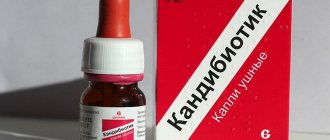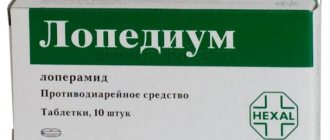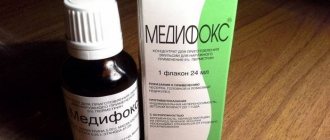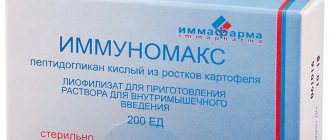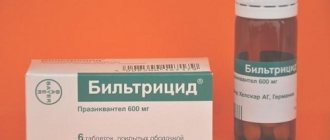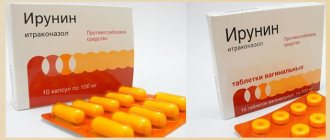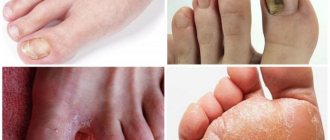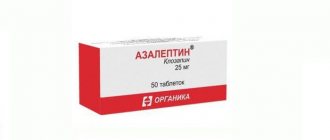Eye products from the Alcon trading company allow you to get rid of discomfort and unpleasant sensations when wearing lenses, eliminate the symptoms of “dry” eyes and belong to the group of tear substitutes.
These drugs are Systane regular, Ultra and Balance. Recently a new product has appeared with the Ultra Plus prefix. The advantage is the ability to instill without removing contact lenses.
Unlike other tear substitutes, the natural component used as a base is hydroxypropyl guar. It is obtained from guar gum, synthesized from the seeds of the pea tree or guar. This component gives the products a viscous consistency. Thanks to this property, they remain on the mucous membrane longer, protecting the surface and replacing the tear film.
Release form and composition of the drug
The drug is available to patients only in the form of eye drops. They are a clear, colorless liquid, packaged in polyethylene bottles of 3, 10 or 15 ml.
The solution does not have a specific aroma, which makes it easier to use and does not provoke negative reactions in patients with a tendency to allergic manifestations. Each bottle of solution is placed in an individual cardboard box. In addition, it contains instructions for using the medicine.
The drops contain several active components that provide a therapeutic effect:
- Polyethylene glycol.
- Propylene glycol.
- Hydroxypropyl guar.
- Boric acid.
The medicine also contains auxiliary components in the form of potassium chloride and sodium chloride, as well as sorbitol. Additionally, the composition contains polyquad. Auxiliary ingredients do not have a therapeutic effect.
Pharmacological properties
Systane Ultra - eye drops, the price of which is quite high. They have unique protective properties. Due to the presence of several active components in the composition, damage to the cornea of the eye is prevented, as well as protecting it from the negative effects of external factors.
Additionally, the medication has moisturizing properties; when using drops, the production of natural lubrication of the eye is stimulated. As a result, the nutrition of the eyeball improves and the risk of developing various pathologies that arise against the background of dryness and weakened protective abilities is reduced.
Additionally, the medication prevents the proliferation of microorganisms on the surface of the cornea, which is also considered an advantage and allows it to be used to prevent various disorders.
For patients who suffer from chronic inflammatory and other eye diseases, the use of such drugs is recommended, as the drugs help to significantly reduce the risk of relapse or development of complications.
Pharmacodynamics and pharmacokinetics
The pharmacological agent has a protective effect due to the content of unique active components. When applied to the cornea, a kind of protective shell is created on its surface, which prevents the negative effects of external factors, as well as the influence of pathogenic microorganisms that can penetrate the natural protective layer.
Additionally, the medicine has an anti-inflammatory effect, relieves severe symptoms of certain diseases, which gradually worsen in the absence of proper treatment. In addition, the drops relieve itching and burning in allergic reactions that extend to the eyes. The patient feels relief immediately after applying the product.
Another property of the medicine is the ability to eliminate redness and other manifestations of allergies, such as swelling.
As a result, not only discomfort is eliminated, but also the progression of the pathological process is stopped. Patients note that the product also acts for a fairly long period of time and does not have a negative effect on the clarity of vision.
Many patients, when using drops, notice that eye fatigue manifests itself much later than when the visual apparatus is strained without the use of the drug. The complex effect on the cornea allows the medication to be used as an independent method and as part of the treatment of various pathologies.
When used topically, the active components of the solution almost do not enter the systemic circulation, which is considered an advantage, since the risk of overdose is minimal. Despite this, with prolonged use, traces of active substances may appear in the patient’s blood. The components do not bind to plasma proteins, are not metabolized in the body and are not processed in the liver.
Experts note that the active substances of the drops do not accumulate in the tissues of the visual apparatus or directly on the cornea. Even after long-term use there is no cumulative effect. As a rule, when introducing drops, residual substances are washed away using the lacrimal apparatus within several hours.
There is a slow leaching of substances in patients who suffer from dry cornea, as well as some other pathologies accompanied by similar manifestations.
In what cases are eye drops prescribed during pregnancy?
During pregnancy, eye drops can be prescribed only in cases where the lack of drug intervention could harm the expectant mother. Prevention during this period, as a rule, is not used, since, despite the local effect, some of the active components of ophthalmic drugs enter the blood, which means they enter the fetus through the placenta and can affect its development.
However, infections during pregnancy pose a greater danger than medications, so even low-grade inflammatory processes should be treated. In such cases, during pregnancy you can (and even need) to resort to appropriate measures. There are eye drops, the list of main components of which does not contain substances that can radically affect a woman during pregnancy and her unborn child.
Indications for use
Systane Ultra is prescribed to patients of all ages. Eye drops can be used in short and long courses, despite the fact that they have a high price, and not every patient can afford to purchase the medication.
Main indications for use of the product:
- Conjunctivitis of infectious and allergic origin in the remission stage, when the most pronounced manifestations are stopped with potent medications.
- Dry cornea as a result of metabolic and other disorders. In this case, the medicine can be prescribed at the initial appearance of such a symptom or with constant discomfort in patients who are prone to such manifestations.
- Eye irritation from working with various equipment, such as a welding machine.
- Long-term and constant loads on the eye apparatus due to professional activities. Programmers, accountants, teachers and many other people need to periodically use such medications to eliminate discomfort and alleviate the general condition of the visual system.
- Allergic diseases of systemic origin, in which general symptoms appear in the form of conjunctivitis. In this case, the patient should not have a purulent process of the eyelids or cornea.
- The recovery period after eye surgery or after removal of a foreign body. It is worth remembering that the drops are used no earlier than 2 weeks after the manipulation, since in the first days they can provoke complications.
In addition, drops are often prescribed to patients who regularly use contact lenses. Not every lens requires the use of such drops, but when using reusable devices, it is worth paying attention to them.
Storage conditions and periods
Recommendations for storing the medicine are always indicated on the packaging, however, the maximum period of use after opening should not exceed 6 months. Like many other medications, Systane should be kept away from children. The temperature should be room temperature, but it is advisable not to exceed 25 degrees. There is a need to tightly close the medication, since otherwise there is a risk of its deterioration when interacting with oxygen.
There are no special storage conditions, which allows you to take the drug with you to any place, but the main thing is that the medication is tightly secured. After the bottle has been used, it is advisable to put it back into the packaging. If you do not open the bottle, the shelf life of the drug reaches 2 years.
It is advisable not to place the bottle in the sun. Direct sunlight negatively affects the drug, causing its premature deterioration and reducing shelf life.
Contraindications
Despite the wide range of activity of the drops, their use is contraindicated in case of individual intolerance to the components of the composition. If the patient has had negative reactions in the past to other drops containing such active components, you should stop using it and choose another remedy.
The medication is contraindicated in the early postoperative period after surgery on the eyeballs. If a foreign body is detected in the eye, the use of drops is allowed to begin 1-3 days after its removal.
The medication is not prescribed to children and adolescents under 18 years of age, due to the lack of data on its effect on the cornea of the eye. In each case, the list of contraindications may be supplemented, which depends on the individual characteristics of the patient’s body.
Comparison of drugs
Systane regular and Ultra are prescribed for dry eyes and discomfort due to a deficiency of the aqueous layer. Unlike the usual product, the drug with the Ultra prefix contains sorbitol. Its function is to attract moisture and retain it on the surface of the eye longer. Therefore, it has a stronger moisturizing, cornea-protecting effect. Systane Balance contains the patented Lipitech system, which includes phospholipids and mineral oil.
It helps restore all layers of the tear film. Thanks to this, the product is effective for dryness caused by problems in the lipid layer, reactions to cold air, sun, and wind.
Another difference between the drugs is age restrictions. Regular Systane is not prohibited in childhood, but can only be used as prescribed by a doctor. Improved forms are recommended from 18 years of age.
Instructions for use, dosage
For different disorders, the regimen for using the medicine may differ. Before starting use, it is better to visit an ophthalmologist, who will determine the duration of the course and prescribe the most appropriate dosage.
| Violation | Scheme for using drops |
| Dry cornea of various origins | This disorder requires special therapy with various medications, but to alleviate the patient’s condition, doctors allow the use of drops at home. During the day, the patient should inject 1-2 drops into each eye. The number of uses per day is approximately 5-6 times. If necessary, it is allowed to instill eye drops up to 10 times a day if the effect of the medication quickly stops or the discomfort is severe. The duration of the course is 10-20 days, depending on the severity of the condition. It is allowed to extend it, but after consulting a doctor. |
| Discomfort with constant and prolonged loads on the visual apparatus | For such disorders, it is recommended to administer drops at least 3 times a day, 1-2 drops in each eye. This will allow you to constantly maintain moisture balance and eliminate severe discomfort. The duration of use depends on the condition of the eye apparatus. It is worth noting that with rare use, doctors allow the introduction of drops until the discomfort is completely eliminated. On average, the course lasts 2-4 weeks. |
| Allergic conjunctivitis | The allergic form of conjunctivitis is treated comprehensively, but drops are allowed to be used to speed up the healing process. Apply eye drops up to 6 times a day, 1-2 drops in each eye. The duration of use ranges from 1-3 weeks depending on the severity of symptoms. |
Before the eye drop procedure, you must thoroughly wash your hands with soap and dry with a towel. After this, it is better for the patient to take a comfortable position in which he can tilt his head back.
The previously opened bottle is brought close to the eye. It should be pressed lightly, which will cause liquid to appear at the tip of the dropper. 1-2 drops are injected into each eye. After administration, it is important to open and close the eye several times, which will allow the solution to be distributed over the entire surface of the eyeball.
After use, the bottle should be carefully closed and stored in a dark place. You should not strain your visual apparatus for several minutes after the procedure.
Action of the medication
How do Systane eye drops work? The use of such a drug helps reduce dryness and symptoms of eye irritation (for example, burning sensation, itching, redness).
The therapeutic effect of the medication begins almost immediately after instillation and lasts throughout the day.
When Systane drops get on the mucous membrane of the eye, a delicate polymer film is formed that protects the visual organ from irritation and drying out. Throughout the day, the moisturizer is gradually washed away naturally (along with tears).
Side effects
Systane Ultra - eye drops, the price of which is quite justified. They rarely provoke negative reactions, which is associated with minimal absorption into the systemic circulation and the absence of a cumulative effect.
However, the occurrence of negative reactions cannot be excluded, even if all the rules for using the medication are followed. As a rule, complications affect the visual apparatus; in most cases there are no general symptoms. Patients are concerned about itching of the skin of the eyelids, the appearance of a small rash on the cheeks or eyelids.
Sometimes an allergy manifests itself in the form of severe swelling of the skin of the eyelids, spreading to the face. The skin becomes red and painful to the touch. When scratching the affected area, pockets of irritation appear, the outer layer of the skin is damaged, which increases the risk of infection if personal hygiene rules are not followed.
Allergy symptoms usually disappear after stopping use of the medication. In some cases, it is necessary to prescribe antihistamines to relieve symptoms.
Side effects
Systane has virtually no side effects. Since the main advantage of the drug is hydration, there is a problem of excessive tearing from the eyes. Therefore, you should not use the drug in excess of the norm. The second problem may be irritation. To prevent this from happening, you need to consult an ophthalmologist about the frequency of use. There is a possibility that you will need to replace it with analogues, which in turn are much cheaper.
Systane Ultra should not be used during lactation. Studies have shown that the drug has a negative effect on breastfeeding women.
Key aspects to pay attention to:
- Systane Ultra is produced in various forms;
- The main task of the drops is hydration;
- The main contraindication is drug abuse;
- Recommended use: 1 time per day;
- Children can use it after reaching 2 years of age;
- After opening, it can be stored for 6 months;
- Cannot be used by nursing mothers.
Overdose
No cases of overdose have been recorded. However, doctors suggest that with frequent and long-term use of drops, all manifestations of allergies may worsen. External symptoms are complemented by systemic disorders.
Patients are concerned about headache, weakness and dizziness. Possible sleep disturbances, loss of appetite and severe thirst. In advanced cases, there is swelling of the mucous membranes of the throat, causing difficulty breathing. Such disorders develop very rarely, but if they occur, you should immediately stop using the product and rinse your eyes with running water.
If symptoms do not disappear, you should consult a doctor to get qualified help.
special instructions
Systane Ultra is an eye drop, the price of which may vary slightly in different pharmacies. They should not be used for a long time without a doctor's prescription. This can cause complications.
When instilling eye drops, it is important to monitor the approach of the bottle dropper to the cornea. It should not touch the eye. When touched, microbes may multiply on the tip of the bottle, which will enter the eye when instilled again.
Systane Ultra eye drops
You should not administer more than 2 drops into each eye, since no more than 1 drop is placed in the conjunctival sac. During pregnancy and lactation, the product is not contraindicated, but it should be used only after consulting a doctor.
When using it, it is important to pay attention to the expiration date of the medicine. After its expiration, the use of drops is prohibited, as changes occur in the chemical composition.
Possible complications caused by the drug
The development of unpleasant symptoms may occur as a result of individual intolerance to the constituent drops. As a result, the following complications may arise:
- hyperemia of the eye,
- itching,
- burning,
- active secretion of tear fluid,
- change in vision.
If these symptoms occur, you should urgently visit an ophthalmologist. Very often, the doctor reviews the treatment and prescribes analogues.
Analogs
The price of the drug is quite high, which forces many to look for a more affordable substitute. On pharmacy shelves you can find many products that have similar properties.
The most popular analogues:
- Visine pure tear is a universal and relatively safe drop based on a polysaccharide. Often used as a means of moisturizing the cornea and eliminating discomfort associated with wearing contact lenses. The drug contains a different active ingredient, but has similar properties. It is necessary to instill eye drops 3-6 times a day, the duration of the course is determined individually.
- Artificial tears - drops from a Russian pharmaceutical company based on hypromellose. They have a moisturizing effect, relieve irritation and create a protective layer on the surface of the cornea to prevent the negative effects of external factors. The duration of the course and dosage of the drug is determined depending on the characteristics of each patient.
- Visomitin is an effective drop that is used for chronic dryness of the cornea, as well as eye irritation due to constant and prolonged stress. The medication is considered very effective because it helps to significantly improve the condition of the cornea in 1-2 weeks and prevents complications resulting from the development of pathogenic microflora on its surface.
- Hilo-chest are unique drops based on hyaluronic acid, which have the ability not only to moisturize the cornea, but also to stimulate the restoration of its cells, which has a positive effect on the visual apparatus. As a result of using drops, the progression of many diseases is stopped, as well as the discomfort when working at a computer or eye strain is eliminated.
The use of any analogue should be agreed with a doctor, despite the relative safety of the medications.
